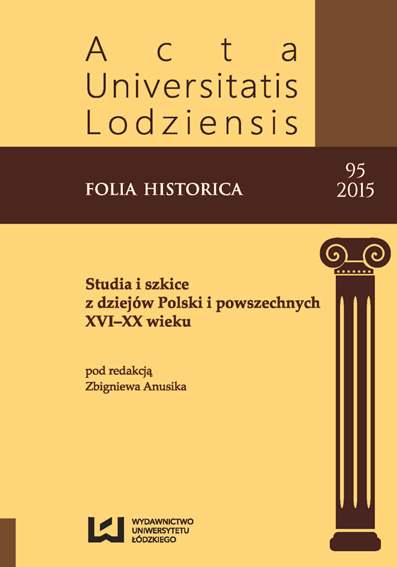Epigrafika w Małogoszczu XVI–XVIII w.
DOI:
https://doi.org/10.18778/0208-6050.95.03Abstrakt
In Małogoszcz there are preserved 55 epigraphic monuments from the late 16th to 18th century. The mentioned town is one of the most important centers of Old Polish epigraphy in the region and in general in the province of Kielce. Richer resources can boast only Jędrzejów (59 epigraphic monuments) and Kielce (57 epigraphic monuments).
Epigraphic monuments in Małogoszcz are located in places of worship (parish church dedicated to Assumption of the Blessed Virgin Mary and Saint Stanislaus branch church in Babinek), with one exception of the inscription located on the window frame of presbytery. There are 17 monuments of the 16th century, 35 of the next century, and 3 of the 18th century. Among the inscriptions the most abundant are all kind of tablets (gravestone, commemorative, votive, aphoristic and aphoristic- votive plaques) in the number of 23. In second place in terms of numbers ranked up the graffiti, which are 15. We also have three heraldic cartouches, two portals, the same number of chalices and bells, a stone slab, a frame of window, a chasuble, a monstrance, a ciborium, a vessel designed to keep the holy oils, ampoules and a votive plaque. Most of the inscriptions were carried out in Latin, and only three in Polish. The dominant type of script is inscriptional capitals (humanistic capitals).
Most of the monuments were found by the clergymen. It should be emphasized activities of two representatives of Chrostkowic family – Jacob Bieda and his nephew Jacob (the Younger). They founded more than 20 objects bearing inscriptions. A smaller share in foundations had representatives of the other states – townspeople and noblemen. In epigraphy of Małogoszcz there is a high volume of various types of abbreviation.
The most popular is suspension, and in inscriptions of the 16th and 17th century also abbreviatio per signum abreviationis. It is characteristic a little quantity of shortening per litteram suprascriptam. There is also a small amount of shortening in inscriptions carried out in Polish. The stonemasons from Małogoszcz often skipped the characters describing the hash value as well. In the monuments of the late 16th century and the first half of the 17th century, draws attention the way of saving the daily and annual dates, not occurring anywhere else in the region. It shall also apply the specific and unique measures of abbreviation, that make almost impossible to decipher an inscription.
Pobrania
Pobrania
Opublikowane
Jak cytować
Numer
Dział
Licencja

Utwór dostępny jest na licencji Creative Commons Uznanie autorstwa – Użycie niekomercyjne – Bez utworów zależnych 4.0 Międzynarodowe.











